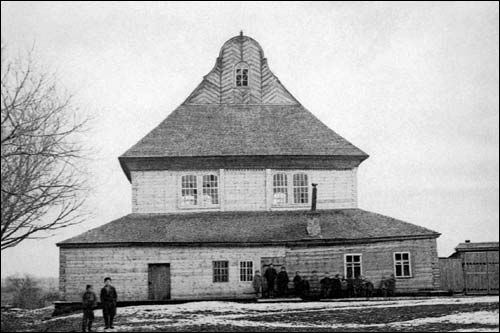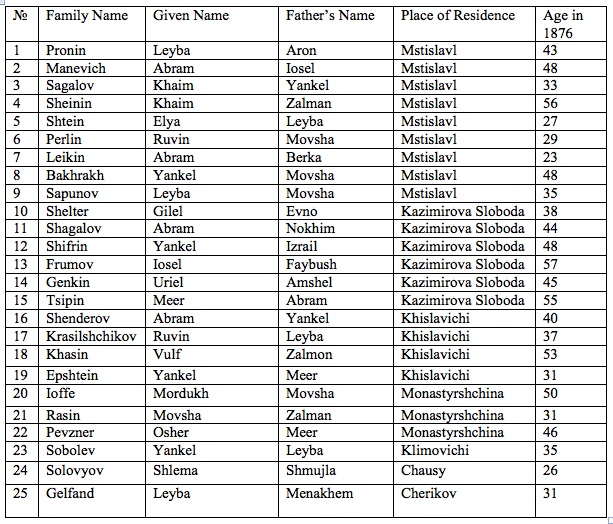In the Russian Empire of the 19th century, day schools (called cheder) were very common for Jewish boys.
Students were divided into three age groups. From ages 3-5, the youngest boys learned the Hebrew alphabet and reading skills. From ages 5-8, they were already learning Torah with Rashi commentary and beginning to learn Talmud. Those ages 8-13 were learning Talmud in depth.
Classes began early in the morning and finished around 7-8pm. Upon completion of cheder, the graduates could enter a yeshiva for further education, but not many students did that.
Cheder teachers were called melamed, and each melamed had to obtain a state teaching license to run the cheder and collect tuition from the parents. A cheder was not allowed to enroll more than 40 students per school year.

Building of Synagogue in shtetl Mstislavl mid 19th century
Below is the list of the melameds of Mstislavl uezd who, in 1876, had obtained their teaching licenses.
The list includes melameds from the following shtetls: MSTISLAVL, KAZIMIROVA SLOBODA, KHISLAVICHI, MONASTYRSHCHINA, KLIMOVICHY, CHAUSY, CHERIKOV.
Due to limited space, we cannot include the physical description of each melamed or copies of their licenses.

Salomão Bernstein
September 16, 2014
Thanks for this information.I`m looking for localization the place were my father Nevach (Noier) Bernstein have lived and his father > Shlomo (Solomon) and mother Lea Berenstein.
jhrgbelarus
September 17, 2014
In 19 century last name Bernshtein was very common among Belorussian jews. This last name is seen in 19 shtetls of Grodno guberniya. if you do not have any additional information or other clues it will be very difficult to establish his hometown.
Schelly Talalay Dardashti
September 19, 2014
Hi, Yuri. In 1876, Vorotischtina agricultural community (near Mogilev) had a big school. And several TALALAI were melameds there. One in particular David Talalai, who went to Moscow very early in 1902. Any chance of getting the list of melamedim for Vorotinschtina (or for Mogilev, where our ancestor Rabbi Leib Talalai, lived?)
Lisa G
September 22, 2014
This is a great research site! Are similar lists of teachers available for Sopotskin in Grodno gubierna, 1870-1900? (My great-grandfather’s brother, Abram Elias Maruches, supposedly taught there.) Thank you.
jhrgbelarus
September 23, 2014
Thanks! We didn’t see melameds lists for Sopotskin.
jhrgbelarus
September 23, 2014
Hi Schelly, we saw Mogilev guberniya melameds list for 1870. I am not sure if there was a separate list for Vorotynshina. When we will have an opportunity we will take a look.
Shana Tova!
Yuri.
Elaine Bush
February 23, 2015
My Frumov and Sheinin families were from Monastirshchina and towns nearby. Very gratifying to see these surnames. The given names are not familiar.
Elaine Bush
June 16, 2015
Follow up to my previous comment. I read in the above article that there are further descriptions of the melameds that were not printed due to space. I’d like very much to know the further descriptions of Iosel Frumov and Khaim Sheinin. Would that be possible?
jhrgbelarus
June 22, 2015
I just realized that you were meant the other list, not from my post in face book. Original lists of melameds contains some additional information, but we will be able to get back to that list only at the end of September. Please, remind me.
Elaine Bush
June 16, 2015
Follow up to my previous comment. I read in the above article that there are further descriptions of the melameds that were not printed due to space. I’d like very much to know the further descriptions of Iosel Frumov and Khaim Sheinin. Would that be possible? I realized that Iosel Frumov could possibly be my three times great grandfather known as Yovsei Frumovich. He was a podravin in Gomel in 1848.